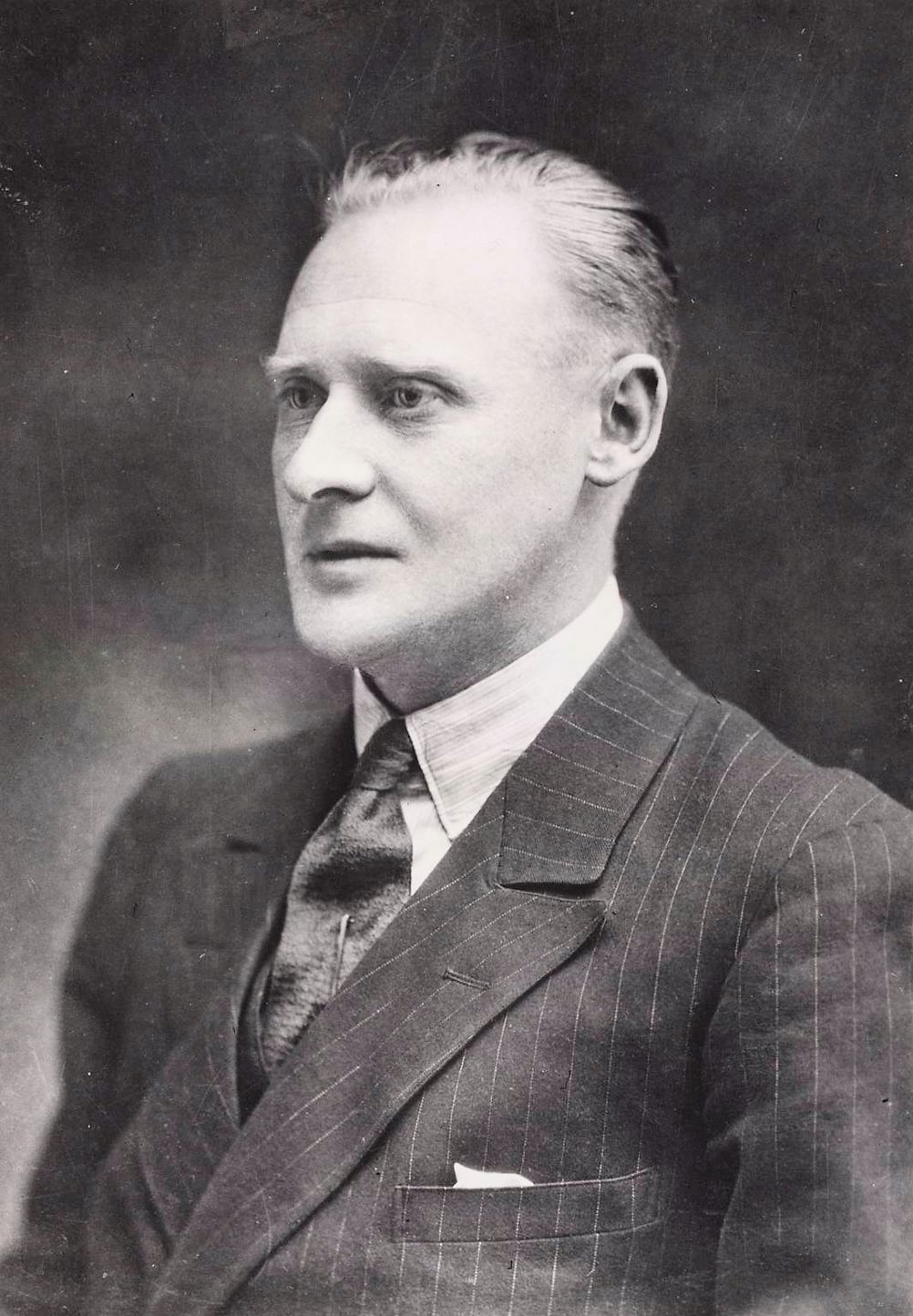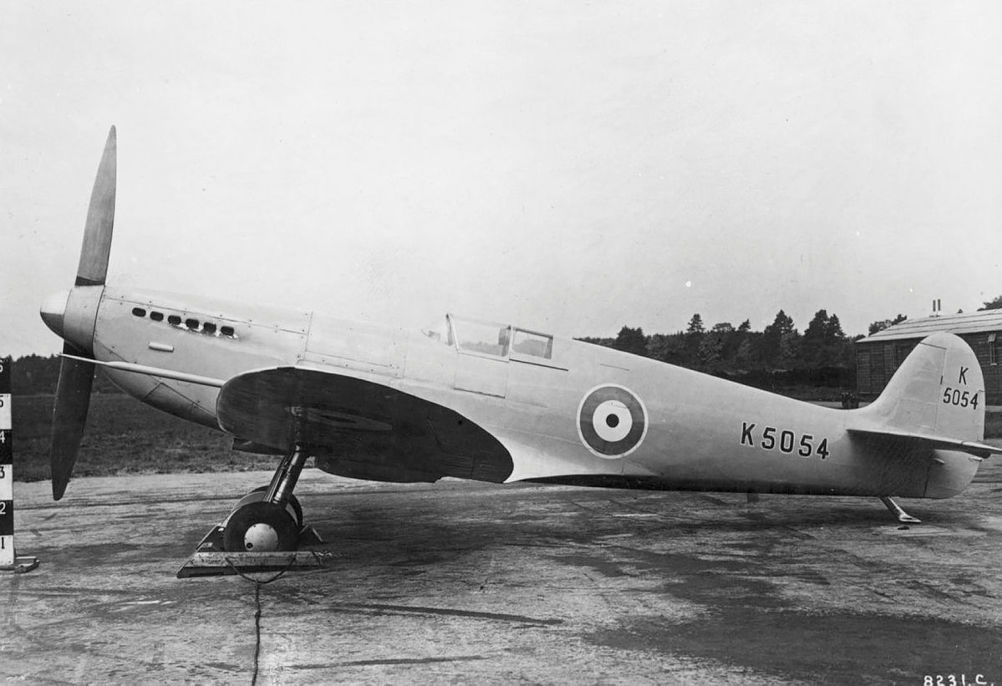Image captions:
The Supermarine Spitfire prototype K5054 in 1936 - Air Historical Branch-RAF
There’s a powerful mythology connected to the Spitfire fighter plane. So powerful in fact that by the 1960s, when sales were at their peak, Airfix was shifting more than 350,000 injection-moulded plastic scale model kits of the aircraft per annum. That’s four times as many as the Hawker Hurricane that could be convincingly argued was the more lethal and influential combat unit. But the British public needed a technology icon of the Second World War, replicas of which it could dangle from the nation’s collective bedroom ceiling, and it chose the Spitfire. British broadcaster Jeremy Clarkson sums up the aircraft’s appeal: “The fact is simple. The Spitfire looked good. It was every bit as dashing as the young men who flew it, and in flight it was as graceful as any bird… effortless, as though it was simply riding the breeze, and its Merlin engine was only there to provide a suitable soundtrack.”
R J Mitchell, the designer behind the world’s ‘favourite’ fighter plane, was a modest man who preferred to live out of the limelight. While propaganda movies have tended to soften his bluff exterior, he was also a straight-forward man of unminced and few words. As Len Deighton writes in Fighter: The True Story of the Battle of Britain, Mitchell thought that in christening it Spitfire, the RAF had given his brainchild a ‘bloody silly name’. When it came to explaining the technical intricacies that went into ‘the best loved British aircraft of all time’ he was equally matter of fact: “If anybody ever tells you anything about an aeroplane which is so bloody complicated you can’t understand it, take it from me: it’s all balls.”

The Supermarine Spitfire has passed into the public imagination as the poster plane of the Second World War, critical in defeating Luftwaffe air attacks during the Battle of Britain in 1940, with more of the combat aircraft built than any other, in total 20,341. But the potency of the Spitfire myth is that, while there is no contesting its monumental role in defending our sceptred isles, there were more Hawker Hurricanes – that to the untrained eye were virtually identical to the Spitfire – in the sky inflicting more German losses, especially in the early part of the battle. Despite which, the patriotic pollsters who rank the Spitfire alongside the Beatles, Henry VIII and London’s double-decker buses as defining icons of England, have remained undeterred. Mitchell’s ensuing fame wasn’t to trouble him: by the time his plane was saving the nation, he was dead. He never saw a production model of plane he thought of as the Type 300 fly, although he was often present at prototype test flights.
Reginald Joseph Mitchell was born in Staffordshire at the end of the 19th century only a few decades after the Montgolfier brothers’ famous demonstration of the first balloon to carry human passengers. Up until this point the evolution of heavier-than-air flight had yielded little more than hypotheses and gliders. But as the son of Yorkshire headmaster Herbert Mitchell received his early education at Hanley High School, young Reginald (who’d later be referred to predominantly by his initials) developed an interest in making and flying model aircraft. On leaving school at the age of 16 he became an apprentice at the Stoke-on-Trent locomotive manufacturer Kerr Stuart & Co, studying engineering and mathematics at night. Towards the end of the Great War and still in his early twenties, he joined British seaplane manufacturer Supermarine Aviation Works at Southampton where, as the company expanded, he rose through the ranks from assistant to the company’s owner – record-breaking powerboat racer and entrepreneur Hubert Scott-Paine – to technical director.
“Spitfire was just the sort of bloody silly name they would choose.”
R J Mitchell (1895-1937)
Mitchell’s value to Supermarine was such that when Vickers took over the company in 1928, integral to the acquisition was that he was retained as a designer for a further five years. Between 1920 and 1936, he designed a total of 24 aircraft including flying boats such as the Supermarine Sea Eagle, as well as racing seaplanes that would compete for the Schneider Trophy. In 1931 Supermarine won the competition with its aerodynamically innovative Roll-Royce powered S.6B, fulfilling Mitchell’s quest to ‘perfect the design of the racing seaplane’, while simultaneously creating the bedrock of technical expertise and experience that would prove vital in the development of the Spitfire. During the same year he was awarded the CBE for services in connection with the Schneider Trophy contest while, crucially for the development of the Spitfire, the Air Ministry issued specification F7/30 for a fighter aircraft to replace the Gloster Gauntlet, one of the last biplanes to see active service. The specification called for a modern fighter capable of a flying speed of 250 mph (400 km/h).
Mitchell’s response came in the form of the Supermarine Type 224 inverted gull-wing monoplane fighter, powered by the Rolls-Royce Goshawk engine. This design was rejected in favour of the Gloster Gladiator but was notable in that its failure would inspire Mitchell to set to work on a series of ‘cleaned up’ designs culminating with the Type 300 that was to incorporate the more powerful Rolls-Royce ‘Merlin’ PV-XII V-12 engine. By 1935 the Air Ministry had issued specification F10/35 written around the Type 300, and with £10,000 development money disbursed from the ministry, Supermarine started to build a prototype. On 5 March 1936, K5054 embarked on its maiden flight from Eastleigh Aerodrome, with Vickers chief test pilot Captain Joseph ‘Mutt’ Summers at the controls.

On landing, Summers instructed the ground crew to leave the machine exactly as it was with the words: ‘Don’t touch anything.’ This was not, as Spitfire folklore would have us believe, because it was perfect from the word go, but because Summers wanted to fly the prototype again later and it was set up how he wanted. Following a further sequence of modifications and test flights, on 3 June 1936 the Air Ministry placed an order for 310 units at a cost of £1,395,000, before any formal report on the aircraft’s test performance had been issued. Interim reports were retrospectively published on a gradual basis.
The Spitfire made its debut public appearance at the at the RAF Hendon air display in June 1936. But it was to be a further two years before the first planes were mass manufactured. By the time the plane was in full production the unit cost was £9,500, with the most expensive components being the hand-fabricated fuselage at £2,500, followed by the Rolls-Royce Merlin engine at £2,000, the wings at £1,800 per pair, guns and undercarriage, both at £800, and the propeller at £350. While a true classic had been born, the Spitfire’s design was to be further refined over its entire lifetime, but not during Mitchell’s. While today he is justifiably known as the engineer who designed the Spitfire, Mitchell’s death in 1937 meant that all subsequent development work would devolve to a team led by chief draughtsman Joseph Smith, who became Supermarine’s chief designer.
As the second man to fly the Spitfire, test pilot Jeffrey Quill, noted in his book Birth of a Legend: The Spitfire: ‘If Mitchell was born to design the Spitfire, Joe Smith was born to defend and develop it.’ Such was the frenetic pace of the Spitfire’s development during the war that in engineering terms at least, the aircraft’s evolution had rendered much of the original design obsolete. When the last airframe – Mk.24 VN496 – came off the production line in February 1948, it was powered by a 2,035hp Rolls-Royce Griffon 61 engine and had a top speed of 454 mph (877 km/h) – almost twice that required by the original specification. Over its service life, there had been 24 marks and 50 subvariants, described by the Imperial War Museum Duxford as a testament to Mitchell’s ‘robust and adaptable design.’
Although rare for aviation engineers to become pilots, Mitchell took flying lessons and was to get his license in 1934. Despite being diagnosed with cancer that year he continued working, not only on the Spitfire, but also a four-engine bomber, the Type 317. Cancer returned in 1936, and he flew to Vienna for specialist treatment. But there was nothing that could be done, and he returned to Britain a month later. R J Mitchell died at home in Southampton on 11 June 1937 at the age of 42, unaware that the war clouds gathering over Europe would soon culminate in a conflict that would turn both the Spitfire and the man who created it into one of the enduring engineering legends of the twentieth century.




Glasgow trial explores AR cues for autonomous road safety
They've ploughed into a few vulnerable road users in the past. Making that less likely will make it spectacularly easy to stop the traffic for...